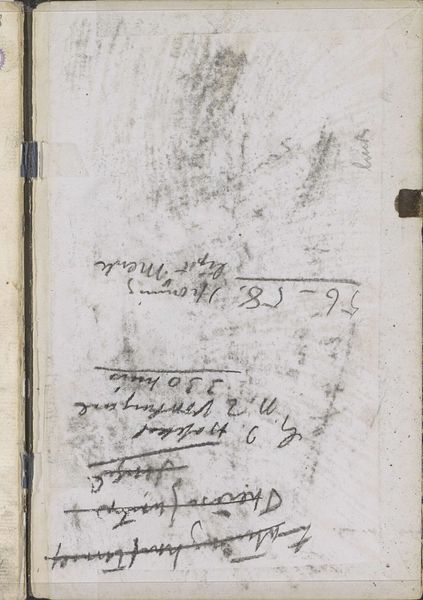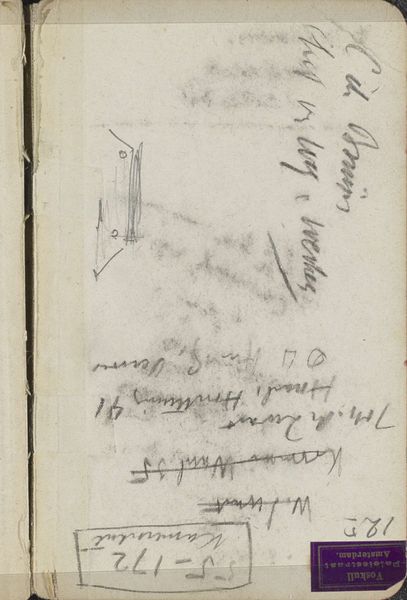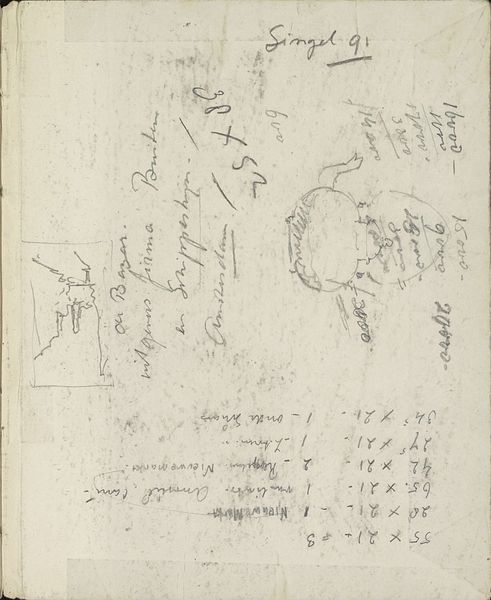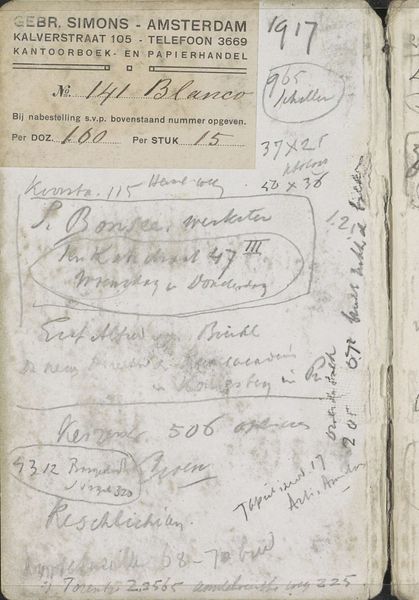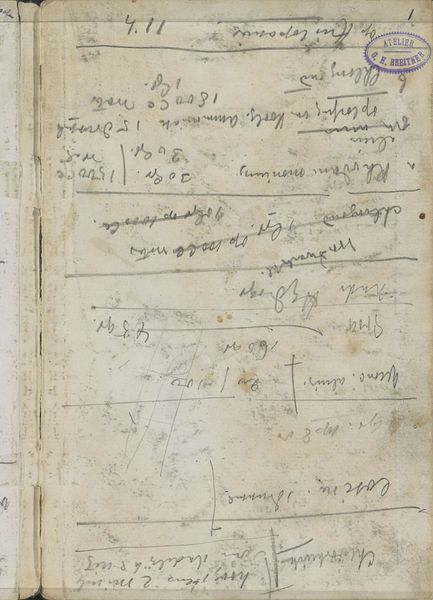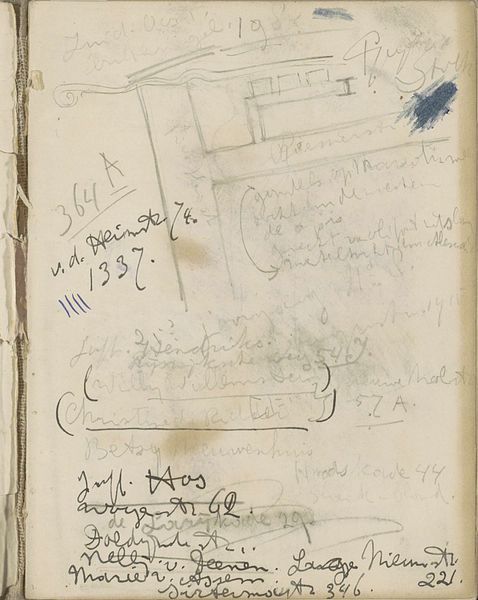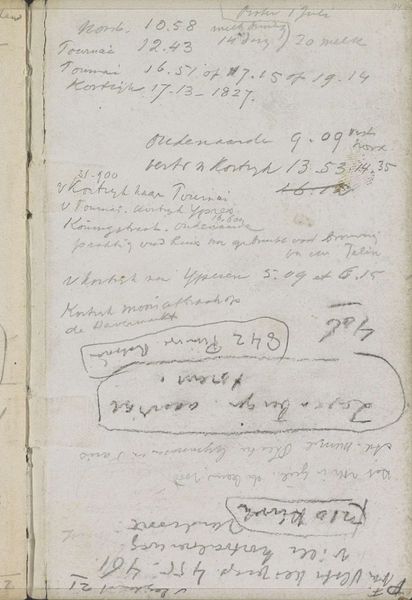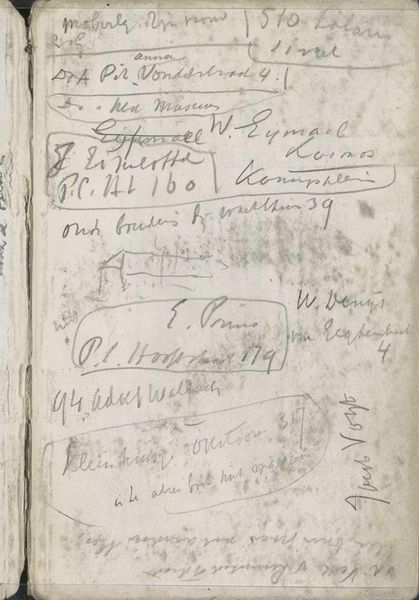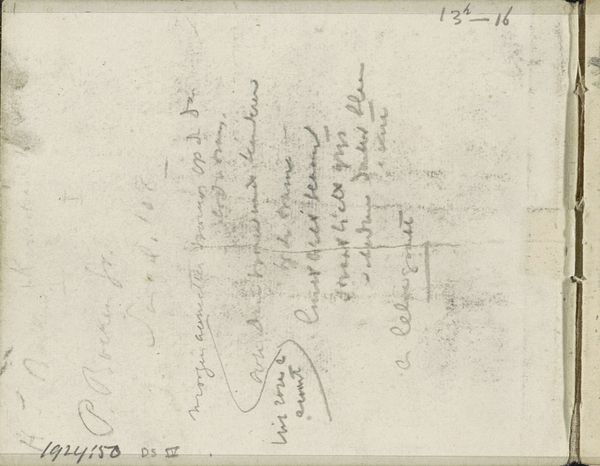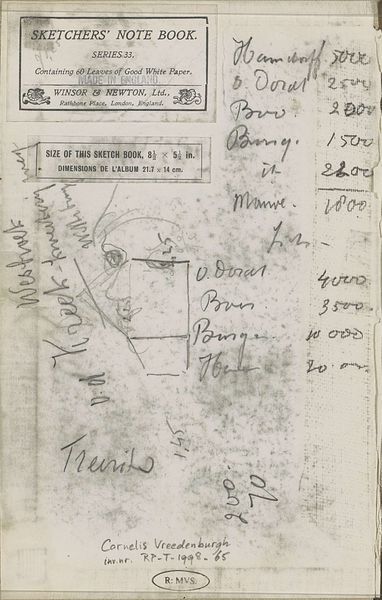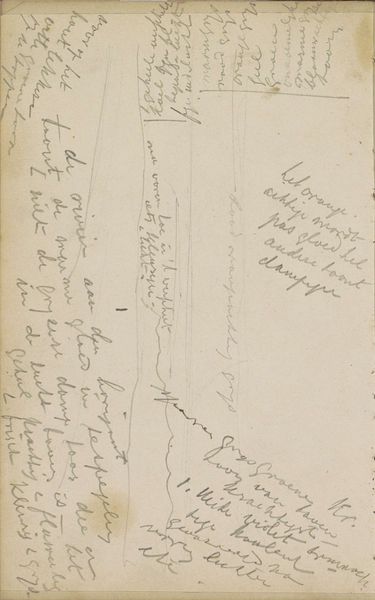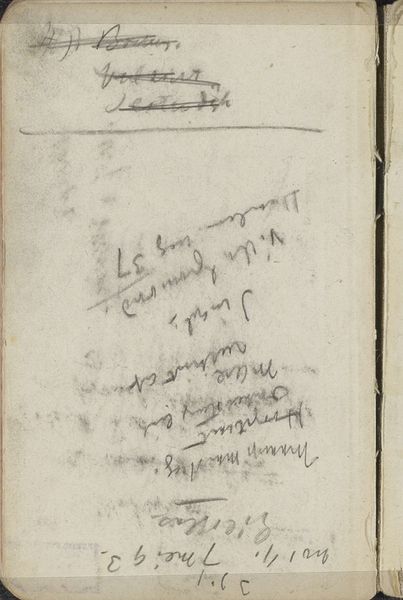
drawing, paper, pencil
drawing
landscape
paper
sketch
pencil
watercolor
Copyright: Rijks Museum: Open Domain
Curator: Before us, we have Cornelis Vreedenburgh’s “Studie,” a work created sometime between 1890 and 1946, held at the Rijksmuseum. It's a drawing using pencil and watercolor on paper, categorized as a landscape sketch. What's your initial reaction to it? Editor: My first impression is one of incredible rawness. It feels like we're looking directly into the artist’s thought process, witnessing the moment of creation itself. The layers of pencil marks, the notations scattered across the page – it’s all quite immediate and intimate. Curator: It does offer a fascinating glimpse into Vreedenburgh’s methods. I am struck by the act of using a ‘Sketcher's Note Book’; these materials produced by Geo. Rowney & Co. suggest something about art as labor and industrial output during this time period. Editor: Absolutely, we must account for the tools available and the conditions shaping art. It reveals a great deal about how landscapes are consumed, recorded, and even made profitable through art. What I want to interrogate, though, is the way this artist interacted with the sites we might view in this landscape, what this means for representations of gender, and if the landscape is being considered beyond being something 'picturesque'. Curator: The loose, almost chaotic layering hints at that, doesn’t it? The text embedded within the sketch gives clues, too – little windows into the thoughts of the artist and how they perceived and tried to understand a scene before them. Editor: And beyond this chaos, the deliberate quality of marks and angles intrigues me as well. What do we say about this particular location represented? Or perhaps about his broader cultural approach, or even how he engages with movements and social considerations shaping landscape? Curator: Precisely, the interaction between the industrial means of production for making sketches accessible and landscape opens up a discourse that demands we also explore colonial interactions present during that era. We could keep looking into this piece forever. Editor: It invites ongoing conversations around labor, and what might have seemed simple quickly evolves into an intersection of the artistic approach and context surrounding his life. I have so much more I need to find out.
Comments
No comments
Be the first to comment and join the conversation on the ultimate creative platform.
